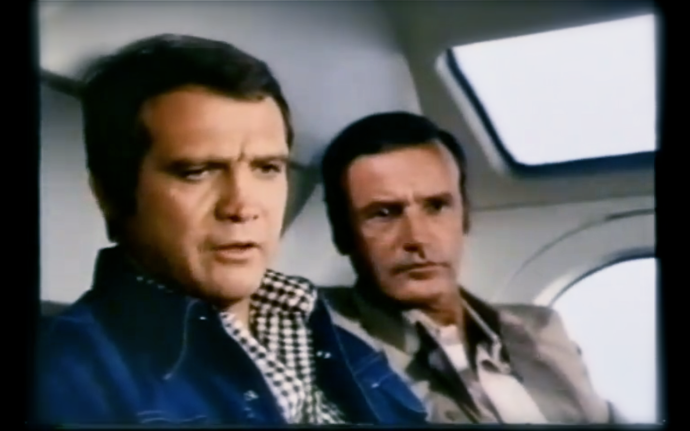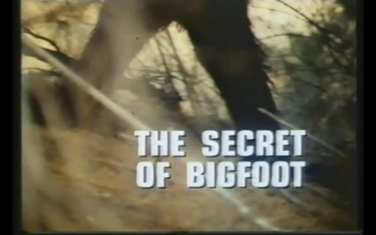I haven’t seen so much as a clip of the Six Million Dollar Man since the program actually aired in the 1970s. For all intents and purposes, Steve Austin has been living exclusively inside my head for the last 35 years. But the memory is a sharp one. I was a TV child and the Six Million Dollar Man was officially my favorite program during the 7 to 9 age bracket, when whatever your earholes and eyeballs glom onto gets etched into the wet cement of your brain pan and hardens into the long-term memory that stays with you forever.
“Steve Austin, astronaut, a man barely alive…Gentlemen, we can rebuild him. We have the technology…We have the capability to make the world’s first bionic man…Steve Austin will be that man.”
These words, set to the beat of Viking war drums, form part of the show’s intro, which still plays randomly from time to time in the surround-sound of my cranial jukebox. For 35 years I’ve been carrying this secret around with me, and I need to get it out in the open.
Turns out there are full episodes of The Six Million Dollar Man available for viewing on the Internet now. So, after a four-decade separation, I finally squared the circle and queued up one of my favorite episodes, “The Secret of Bigfoot (Part I).”
“Bigfoot” begins with the dramatic whirr of a chopper’s blades. Within moments it all comes rushing back to me, not just the Gerald Ford-era banter of Steve Austin and Oscar Goldman as they fly over the “San Madrian” Fault, but the whole gestalt of 1975-76 itself, of what a strange time it was to be alive and living in L.A.
Like the subconscious of the Manchurian Candidate being activated whenever the queen of diamonds is played, the moment I hear that chopper taking Steve and Oscar to their rendezvous with Bigfoot, my brain’s sleeper cells are switched on and I’m right back there in the third quarter of fiscal 1975, this time with the omniscient perspective of a boy from the futuristic year of 2012 AD.
“The Secret of Bigfoot” aired at the very end of the Vietnam era. By this time, choppers are not only synonymous with Southeast Asian jungle combat scenes, but also the harried evacuation of the US Embassy in Saigon that so embodied the unceremonious (some would say humiliating) retreat of a superpower back to where it came from.
And of course, right about then the same thunk-thunk-thunk of the chopper’s blades accompanied the visage of a disgraced President being whisked away from the White House lawn into a hasty exile.
By this time, the whirr of the chopper was also synonymous with our own post-apocalyptic urban condition: cops in hot pursuit of violent criminals, g-men engaged in surveillance and crowd control, news crews updating the citizenry on the myriad traffic jams and high-speed chases affecting the roadways.
The Seventies is when the ominous rumble of the chopper became ubiquitous, when the Vietnam War finally came home.
And to think, in the 1950s helicopters burst onto the scene with such utopian fanfare–a helicopter in every garage so dad could beat traffic on his commute. By the 70s, everything about the Fifties seemed impossibly naïve, but that’s a whole other subject.
♠ ♠ ♠ ♠ ♠ ♠ ♠ ♠ ♠ ♠ ♠ ♠ ♠ ♠ ♠ ♠ ♠ ♠ ♠ ♠
In “The Secret of Bigfoot,” Steve Austin and Oscar Goldman are on their way to help a team of researchers set up a state of the art earthquake monitoring system in the remote mountains on the other side of the “San Madrian Fault.”
Earthquakes loomed large in the 70s for some reason. Maybe it was because LA had kicked off the decade by recording the deadliest quake of its history on the morning of Feb. 9, 1971.
In 1965 it was the Watts Riots; in ’67 it was the acid-eating runaways on the Sunset Strip; in ’69 it was Manson; in ’71 the earthquake. And the even years were no picnic either. It all seemed to be part of LA’s descent into savagery and chaos, and by extension the end times of America’s so-called golden age.
A year before “Jaws” made us afraid to go in the water, a movie called “Earthquake” was the summer blockbuster that made everybody afraid that California was about to fall into the sea. The film was said to be based on the real-life 1971 L.A. temblor; it chronicles the struggle for survival of six ordinary people after a major quake destroys most of Los Angeles. Why not believe it? An earthquake was as likely an event as any to usher in the post-apocalyptic future that seemed inevitably headed L.A.’s way.
“The Secret of Bigfoot” episode of Six Million Dollar Man aired a little over a year after “Earthquake” the movie swept the nation, planting the fear of the fault-line into our hearts. So when Steve Austin and Oscar Goldman fly out to help with the seismic monitoring stations, we know the future of all Americans is at stake here.
ˆˆˆˆˆˆˆˆˆˆ ˆˆˆˆˆˆˆˆˆˆ ˆˆˆˆˆˆˆˆˆˆ ˆˆˆˆˆˆˆˆˆˆ
And of course, as the title postulates, this helicopter ride across the “San Madrian” is all leading up to Steve and Oscar’s imminent encounter with Bigfoot himself.
Bigfoot was another counterculture hero of the Seventies: a loner who wore his hair long and went underground, living off the land and staying one step ahead of the law. During those difficult Gerald Ford years of Mourning in America, Bigfoot was the anti-Nixon.

Steve and Oscar in the helicopter, surveying the San Madrian Faultline, unaware that they will soon encounter Bigfoot.
The Six Million Dollar Man was more than just the stylized choreography of a bionic action hero, more than just homo-erotic stump porn. The Six Million Dollar Man offered helicopters, earthquakes, and Bigfoot–the gestalt of American culture writ small for children to digest. That’s why we loved that show so much, it didn’t condescend; it spoke to us as people, not pupils.
The show was dark, with little time for cuteness or humor. It delved deeply into the paranormal, playing out against a stark backdrop of good versus evil. It was the closest thing we had to the X-Files in the 70s. Before Mulder and Scully there was Steve and Oscar, whose on-screen chemistry fell somewhere between that of Mulder & Scully and the two cops from Adam-12. The love between the two men was real; I can see that now.
I didn’t get more than a few minutes into the episode. I didn’t have to. Everything I needed to see happened right there in the first sequence.

















